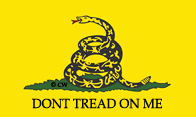For about $20.00, (shipping included,) I purchased Bill Tortolano's little book on Gregorian Chant. The publisher, GIA, suggested that it contained "everything you need to know" about the topic, in the utilitarian sense--that is, one could, after reading the book and with some preparation, actually sing and/or train and conduct singers in the use of Chant.
That's true. It's an easy, short read, and contains all the technical gobbledygook one needs; for that purpose, it's worth the money. Tortolano also includes a number of common Chants for the Mass, a few hymns, a Latin pronunciation guide, the Psalm-tones, etc.--enough to get you started.
He also provides some historical information about the history of various elements of the Chant--the Introit, Kyrie, Gloria, Gradual, etc., etc., which is interesting--but which does not necessarily comport with what others have said on the topic. For example, he states that the Introit was introduced around 422-432. Well, maybe. Other sources state that the Entrance procession was accompanied by a sung Psalm before those dates. It's entirely possible that the Introit, as known today, was emplaced in the early 420's--but he does not mention the "earlier version."
Tortolano does indicate that 'some' Chant is word-painting, and uses the Communio of Holy Thursday (Pater, si non potest) as an example--it is an excellent choice. However, he short-shrifts the concept. Even though he uses the Puer Natus Introit of Christmas Eve as an example of 'easy' Chant (true,) he does not mention that the piece clearly depicts a 'lullaby' rhythmic and melodic concept. While he points out that the Communio of Christmas Eve, In Splendoribus, word-paints the cooing of the doves, he does not mention the open-fifth trumpet calls of the Communio of Pentecost, Factus Est Repente.
Tortolano also off-handedly dismisses the Dies Irae as a 'Chant no longer used.' He's right, of course--but what he does NOT mention is that it is perfectly licit TO use the Dies Irae.
Perhaps most controversial is Tortolano's endorsement of English translations using Chant melodies. It's true that there have been a few serendipitous Anglicizations; but the "Anglicize" project has been the cause of many bloody fights (Schuler v. Schmitt--a spectacular 10-rounder, e.g.) It's dangerous territory, not in the least because English and Latin are very different languages--but also because inevitably, accurate translations which fit the melodic arsis/thesis of Chant are rare.
All-in-all, the book is worth the money for purchase. It's better for its purposes than the ultra-compact technical breakdown fashioned by Paul Salamunovich, an eminent practitioner. (Paul's work fits into two 8 1/2 X 11 pages.) If you take all Tortolano's obiter dicta as Gospel, however, you'll miss a great deal.
Tortolano also appends a long list of additional resources. It is an outstanding list, although there are many highly-educated Church musicians and musicologists who question some elements of the Dom Cardine theories; a couple of Cardine works are cited.
One could buy this and give it to the Parish choir-director as a hint; assuming that they have some intellectual curiosity and an interest in history before 1965, you could have a parish which "cum Angelis canere" glorifies God and sanctifies and edifies the Faithful.
(GIA: G-6471, 7404 S Mason, Chicago, 60638 ISBN 1-57999-539-X, www.giamusic.com)
Subscribe to:
Post Comments (Atom)




1 comment:
There is nothing OKAY about translating Gregorian Chant into English or any other vulgar tongue. People need to get a brain. Chant is supposed to be in Latin. Taking away the Latin is like eating coffee beans instead of drinking coffee. Damn bitter.
Post a Comment